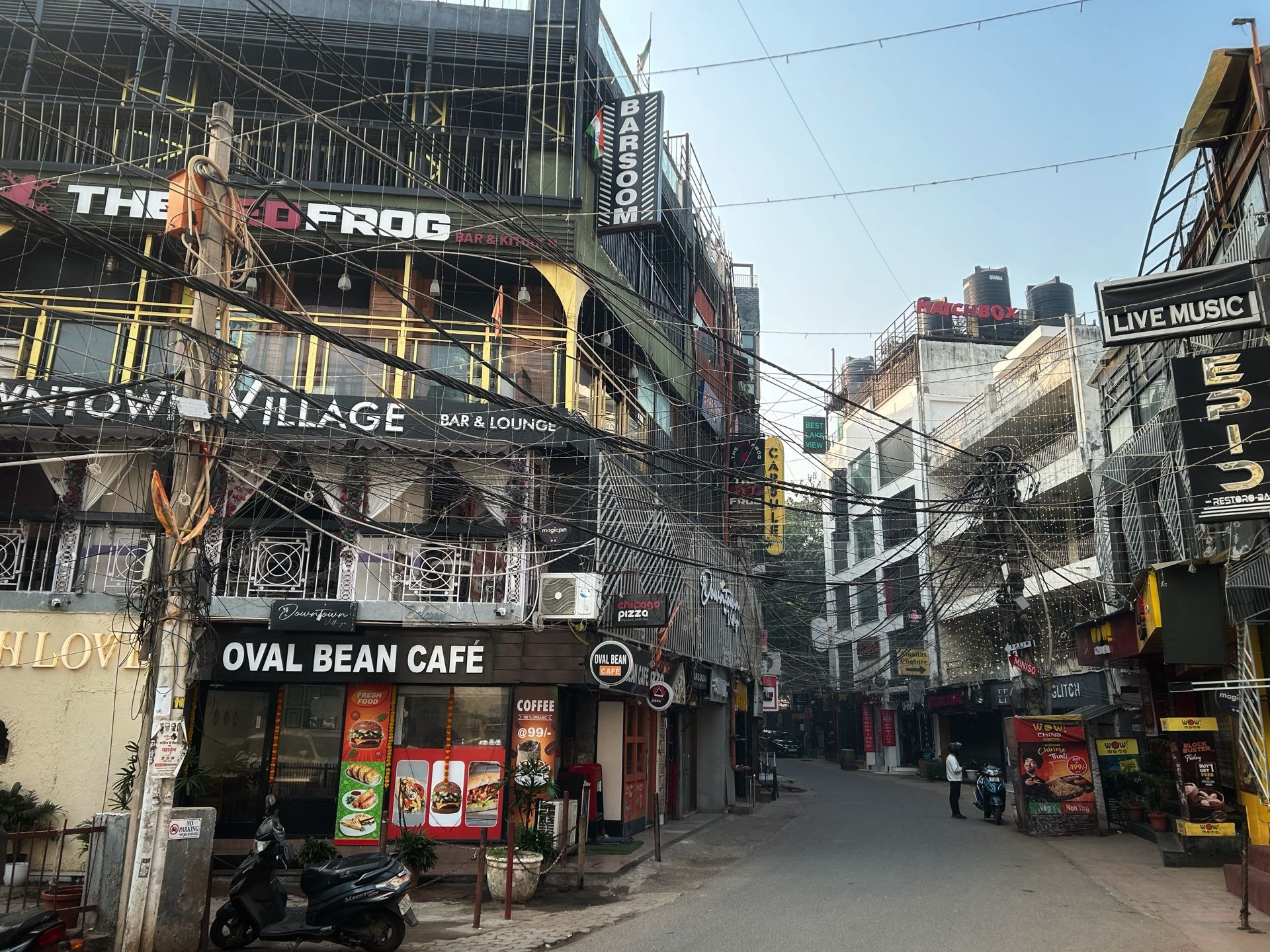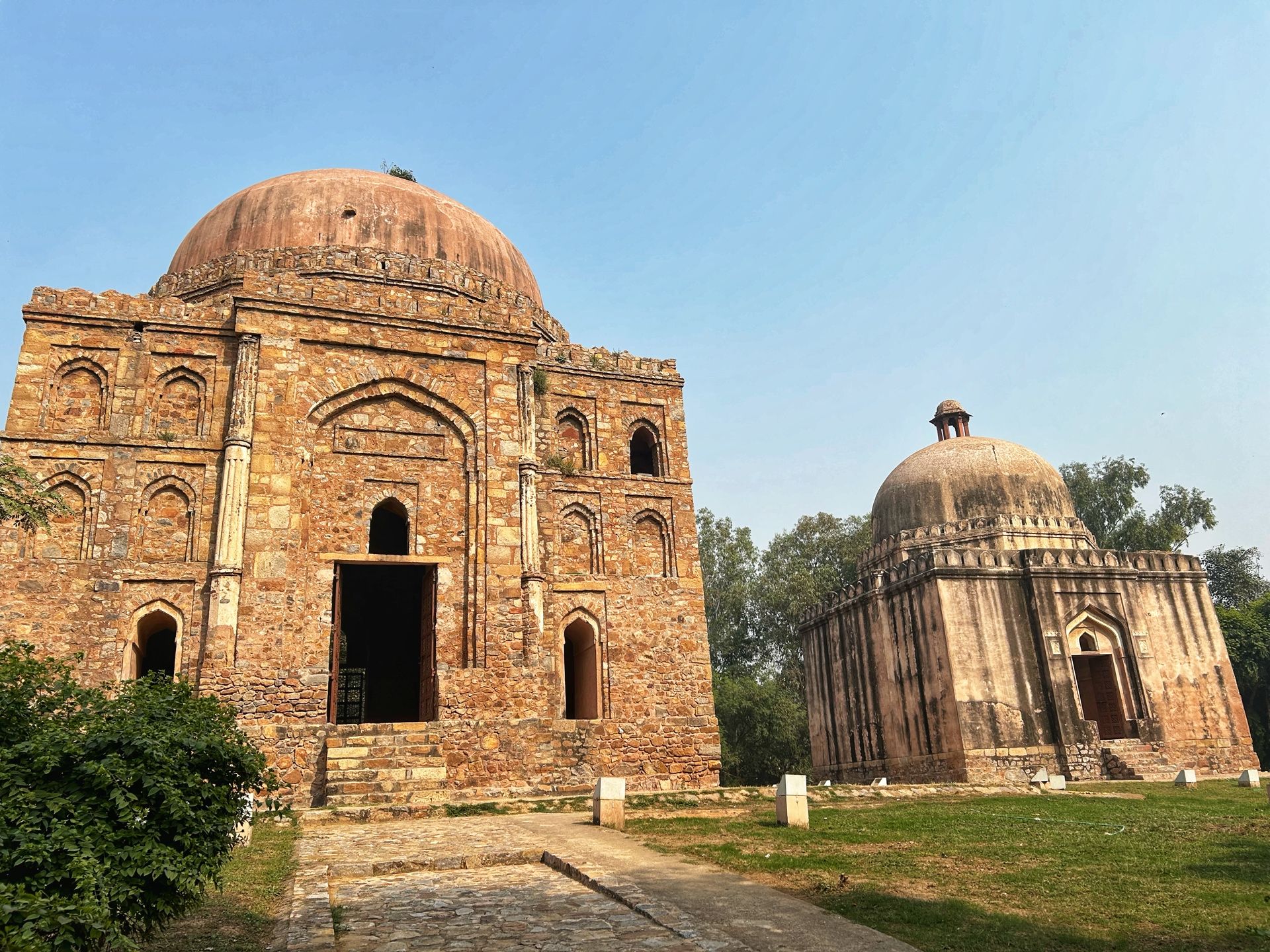

Hauz Khas
Nightlife or Daylife?
A Neighborhood of Contrasts
Nestled in the heart of Delhi, Hauz Khas is a neighborhood that uniquely blends history and modernity. By day, it offers a peaceful escape into the past with its ancient fort, the royal tank, and the lush Deer Park. As night falls, it evolves into the energetic Hauz Khas Village (HKV), buzzing with trendy cafés, lively bars, and vibrant art spaces.
If the first thing you spot is a chameleon perched on a building, you are at the right place and that's the Lokayat Art Gallery.
Today, Hauz Khas Village has undergone a remarkable transformation. Visitors stroll through narrow lanes filled with contemporary art galleries, boutique shops, and colorful graffiti walls. The area offers a variety of cafés and bars, each serving everything from crafted cocktails to live music. Rooftop terraces provide breathtaking views of the illuminated ruins of the fort and the serene Deer Park Lake.
Medieval Beginnings
Hauz Khas has its roots in the 13th century, during the reign of Alauddin Khalji, when it was home to the Hauz-i-Alai, a massive water tank built to supply the Siri fort, one of Delhi's ancient cities. The tank was later revitalized by Firuz Shah Tughlaq and renamed the "Royal Tank," or "Hauz Khas."
Under Firuz Shah’s 37-year rule, Hauz Khas transformed into a center of learning, with the addition of a madrasa, a mosque, and royal tombs. The madrasa became a renowned institution for Islamic scholarship, and Hauz Khas became a symbol of intellectual and cultural advancement.
The madrasa is particularly significant to Firuz Shah, as its design is shaped like an "L" around the lake, with his tomb strategically placed at the bend, marking the focal point of the complex.
A Blend of Function & Beauty
The Tughlaqs were known for their functional architectural designs, and the Hauz Khas madrasa complex is a testament to their vision. The layout is carefully planned to integrate both form and function. The complex houses a mosque, a madrasa, and a tomb, a unique combination typical of Seljuk architectural influence. Surrounding the structures is a beautifully maintained garden, adding a serene touch to the practical design.
The tomb’s west wall facing Mecca, instead of having adorned niches, connects seamlessly to the madrasa’s halls. The wings of the madrasa are double-storied, with stairs leading down to the tank.
The influence of battle and defense can be seen in the structure’s design as well. The inwards sloping walls and kangura pattern decorations on the garden pavilions echo the mindset of the time. These elements reflect the Tughlaq dynasty’s practical approach to architecture, blending beauty with functionality.
History Meets Modernity
Hauz Khas is a unique place where history and modernity come together seamlessly. It offers visitors the opportunity to explore its medieval roots while enjoying the vibrant atmosphere of today.
From its ancient fort and royal tank to its lively art galleries, cafés, and rooftop bars, the neighborhood embodies a fascinating blend of contrasts. Whether you're drawn to its historical significance or the energetic buzz of Hauz Khas Village, this dynamic area continues to captivate all who visit.
More in the Hauz Khas series



